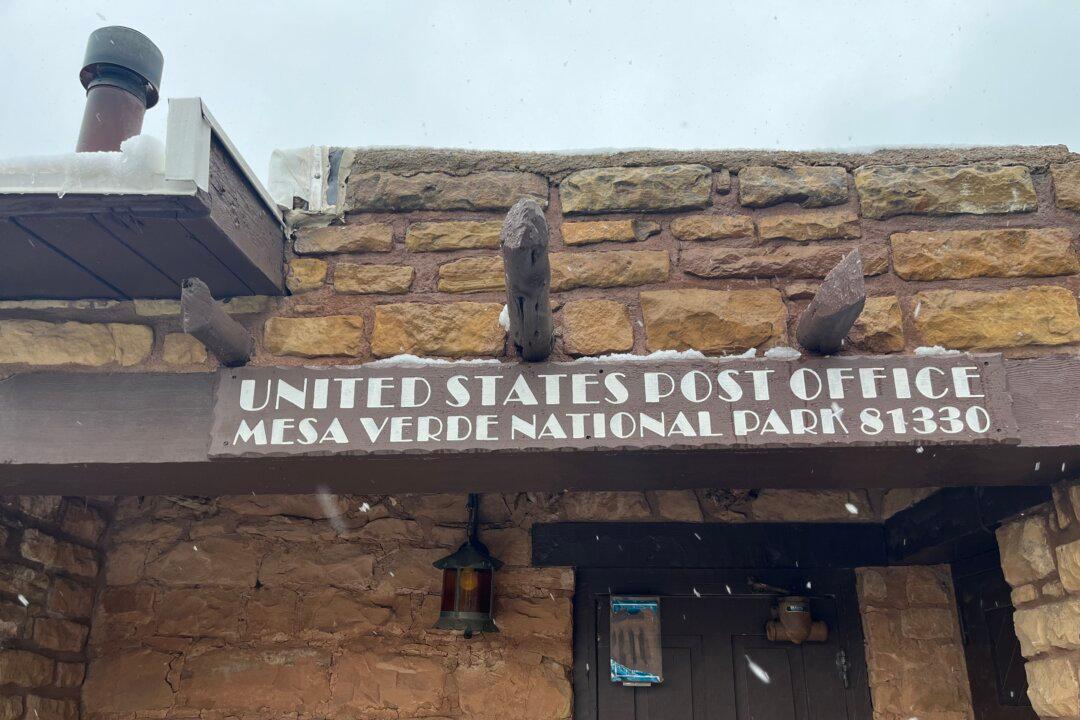I was not dissuaded by the unexpected snow storm and frigid temperatures to take a recently planned March trip to Mesa Verde National Park. After entering the newly snow-plowed park gate road, I drove cautiously the 20-plus miles to first check out Mesa Top—the site of ancient dwellings that are conceivably to the United States what the pyramids are to Egypt in terms of architectural resourcefulness.
In this remote area of southwestern Colorado, near the Utah border, there exists the fascinating remnants of ancient pit dwellings and, most phenomenal of all, cliff dwellings. Their ingenious construction using rocks and clay bricks, air chamber engineering, kiva storage compartments, and much more is astonishing enough, but the fact that pueblo peoples built these elaborate communities into sheer cliffs thousands of years ago defies understanding.

Finding the museum closed and no other visitors at Mesa Top due to the frosty winds and heavy snowfall, I investigated a few other buildings to find a park ranger for guidance on the best way to see the ruins.
Due to the weather, the area appeared isolated and uninhabitable. However, tucked unobtrusively at the end of a quiet, pinyon pine- and boulder-lined parking lot was a dwarfish wooden structure with a hand-carved sign over its door that reads: United States Post Office Mesa Verde National Park 81330.

Inside the pueblo-style building—meaning stacked stone or brick, a flat roof, and visible rough-hewn beams—was a step back to the early 1900s. An employee greeted me, likely happy to see another human in the area, and explained the site’s history. The building was first constructed in 1923 as a Women’s Comfort Station (restroom and shower facility), but the U.S. Postal Service claimed the space in 1935 after initially occupying a room in the park museum’s basement.
Workers living full-time in the park, as well as visitors needing postal services, are the main patrons of the post office, which has its own zip code. Without the post office, postal services would have to be obtained by regularly driving the precarious 20-plus mile steep and curvy mountainous road to the park gate, then another 10 to 15 miles to one of the two nearest towns: Mancos or Cortez, Colorado. In fact, a post office exists in such an obscure location because employees with the National Park Service who live inside Mesa Verde are required by law to have a post office within 25 miles.
Mail has always been deposited for year-round and seasonal National Park Service employees into the still-in-use, elaborately designed bronze and brass boxes. Some were installed in 1935 and the rest 10 years later. Each features an eagle motif and rays of sunlight, as well as a number combination and a small window.
Original 1930s handmade tin-stamped lanterns hang from the low ceiling (a covering of several closely aligned straight sticks (latillas) supported by a few sturdy logs (vigas). The lighting fixtures, writing counter, and doors were made in the 1930s by Civilian Conservation Corps workers. They were also responsible for the craftsmanship of the four-pane, brass-latch window.

It is no surprise that this unique site is a National Historic Landmark. But unless one adds Mesa Verde to their must-see national parks, there is no chance of stumbling upon this little-known treasure of American tradition.
Whether it’s a snow-covered day in March or a broiling one in August, postal workers at U.S. Post Office Mesa Verde make certain full services are offered for mail and packages. The remarkable ruins are certainly why anyone makes a trek to this national park, but the pint-sized historic post office still in operation is not to be missed.








